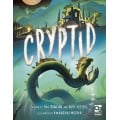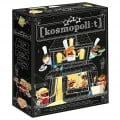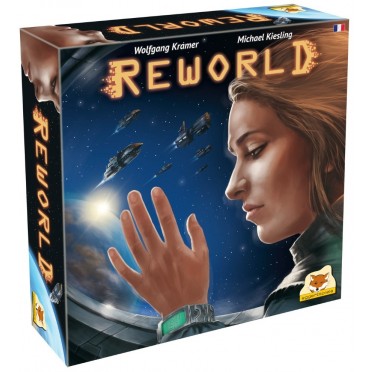Reworld
PBREW01FR
- French
- From 12 years old
- 1 to 2h
- 2 to 4 player(s)
- If neither tile adjacent to the desired tile has been claimed, the player can lay down any card next to this tile, claim it, then place it in the leftmost space of the level of their spaceship that matches the number of the card played. If you play a 4, for example, then you must place that tile in the leftmost position of your fourth level.
- If one tile adjacent to the desired tile has been claimed, then you must lay down a card of the same number used to claim that previous tile or any two cards of your choice (with those two cards thus serving as a joker). Whatever number is topmost indicates the level of your spaceship on which you must place this tile.
- If both tiles adjacent to the desired tile have been claimed and the cards used to claim them show the same number, then you do the same as described above. If the cards have different numbers, however — e.g., 1 and 3 — then you must lay down the same two numbers (1 and 3), one matching number and any other two cards, or any four cards. You place this tile on your spaceship in the same manner previously desired.
| Theme(s) | Science Fiction | |
| Language(s) | French | |
| Author(s) | Michael Kiesling, Wolfgang Kramer | |
| Artist | Michael Menzel | |
| Overall score | 4.4 | |
| Editor | Plan B Games |
Ce jeu est conseillé par 9 de nos Clients
-
Émilie J. le 05/28/23
Bonne surprise. Je rejoins les autres avis (pourtant, les jeux dans l'espace ne m'attirent pas vraiment!)
La mécanique est effectivement plaisante : première phase de programmation qui va se dérouler dans la deuxième phase.
Il faut effectivement essayer de penser à tout dès la première phase, sinon c'est punitif dans la seconde : des modules risquent de partir à vide et d'autres vont être défaussés si aucune navette ne peut les conduire sur la planète.
J'ai retiré une étoile car les illustrations ne sont vraiment pas attrayantes : c'est sombre et les éléments de jeu sont peu identifiables entre eux car trop petits et trop semblables (navette ? Satellite ? Compagnie ? Terra robot?).
Dommage car avec un look plus sympa, ce jeu aurait sûrement eu beaucoup de succès !
1 personne a trouvé cet avis utile -
Emmanuel E. le 07/01/22 Achat vérifié
Kramer Kiesling, on se se trompe que rarement. Le jeu tourne bien, et le thème, bien que ténu (la méchanique est prioritaire ici), fait sens. Le jeu est assez original, car il comporte 2 parties distinctes (mais liées: il faut penser à la 2è partie quand on joue la 1ère). En première partie, on va accumuler des ressources qu'on disposera sur plusieurs "colonnes". L'ordre de pose est primordial. Dans la deuxième partie, on va dépenser ces ressources pour les installer sur la planète, mais attention: on ne peut prendre que les tuiles "libres" de chaque colonne (les tuiles plus hautes). C'est assez fin et demande de la strategie et de la planification.3 personnes ont trouvé cet avis utile -
Eric c. le 02/26/22 Achat vérifié
Le matériel est austère mais je trouve que ça colle au thème. C'est un jeu de programmation et de placement de tuiles très malin. Il y a de quoi bien se faire chauffer les neurones tout en étant accessible. Mention spéciale au livret se règle qui est bien fichu et bien écrit. Essayé seulement à 2 joueurs pour le moment. Les parties ne sont pas longues, il y a peu d'interaction entre joueurs, certains aiment bien de temps en temps (votre serviteur par exemple) et ça permet de bien faire sa salade de point dans son coin. J'aime beaucoup et si ce n'était pour son esthétique je suis sûr que ce jeu aurait fait un carton.3 personnes ont trouvé cet avis utile -
Anthony d. le 02/26/22 Achat vérifié
Très bon jeu simple a comprendre pas de dé les 2 phases de la partie sont intéressantes1 personne a trouvé cet avis utile
Vous devez être identifié pour soumettre des avis.
This game appears in the Tops Games of our players
-
Top des jeux "cachés"
par The french boardgamer
-
Coups de coeur
par Glakus
-
Ma Ludothèque

View all Tops Games
Copyright © 2024 www.philibertnet.com Legals - Privacy Policy - Cookie Policy - Sitemap





